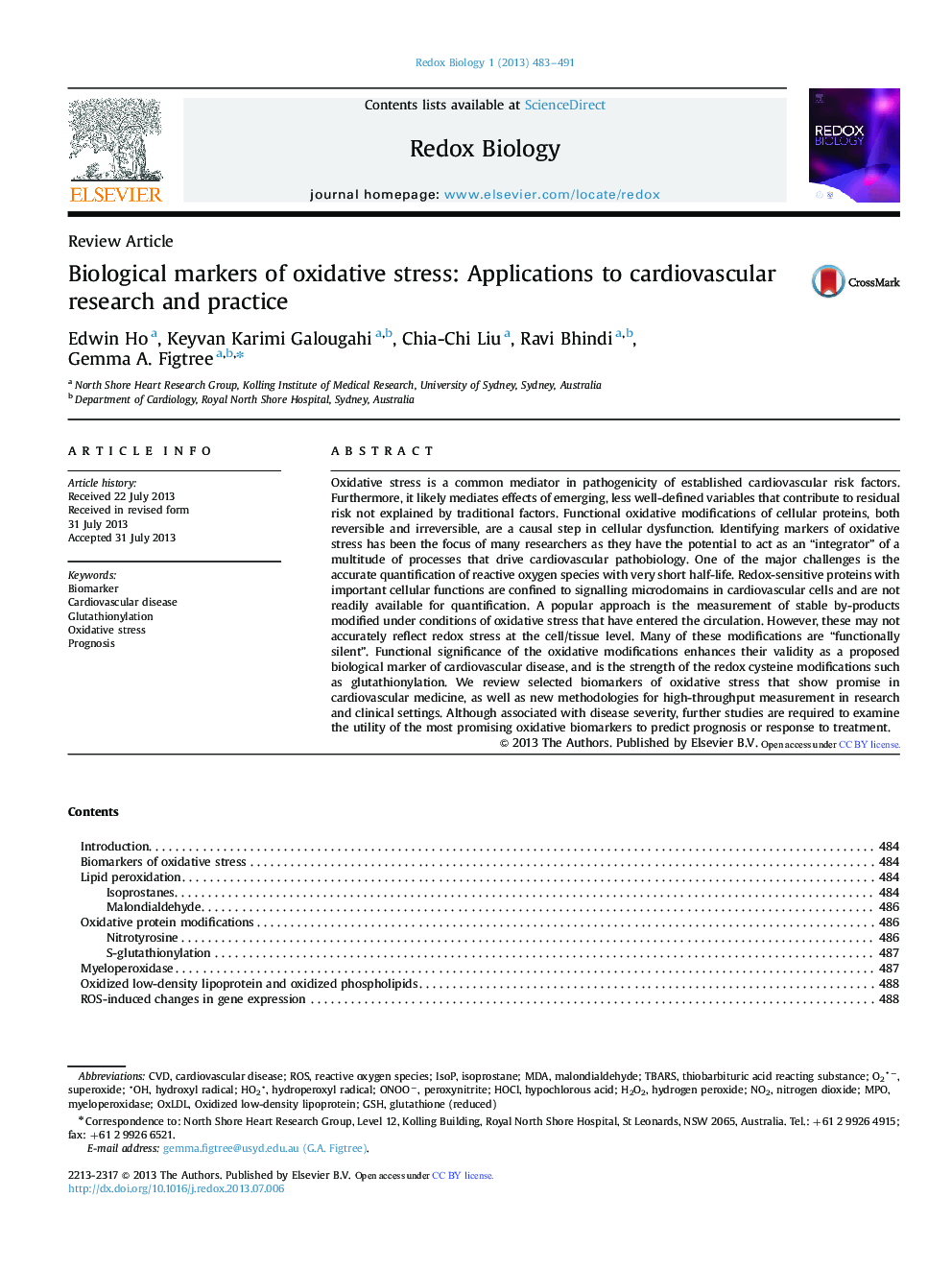| Article ID | Journal | Published Year | Pages | File Type |
|---|---|---|---|---|
| 1923225 | Redox Biology | 2013 | 9 Pages |
•Oxidative stress is a common mediator in pathobiology of risk factors for CVD.•Oxidative modifications of proteins and lipids alter cellular function.•Some oxidative biomarkers have been associated with severity of CVD.•Pathophysiologically relevant biomarkers may integrate the effect of risk factors.•Utility of oxidative biomarkers to guide prognosis/treatment merits further work.
Oxidative stress is a common mediator in pathogenicity of established cardiovascular risk factors. Furthermore, it likely mediates effects of emerging, less well-defined variables that contribute to residual risk not explained by traditional factors. Functional oxidative modifications of cellular proteins, both reversible and irreversible, are a causal step in cellular dysfunction. Identifying markers of oxidative stress has been the focus of many researchers as they have the potential to act as an “integrator” of a multitude of processes that drive cardiovascular pathobiology. One of the major challenges is the accurate quantification of reactive oxygen species with very short half-life. Redox-sensitive proteins with important cellular functions are confined to signalling microdomains in cardiovascular cells and are not readily available for quantification. A popular approach is the measurement of stable by-products modified under conditions of oxidative stress that have entered the circulation. However, these may not accurately reflect redox stress at the cell/tissue level. Many of these modifications are “functionally silent”. Functional significance of the oxidative modifications enhances their validity as a proposed biological marker of cardiovascular disease, and is the strength of the redox cysteine modifications such as glutathionylation. We review selected biomarkers of oxidative stress that show promise in cardiovascular medicine, as well as new methodologies for high-throughput measurement in research and clinical settings. Although associated with disease severity, further studies are required to examine the utility of the most promising oxidative biomarkers to predict prognosis or response to treatment.
Graphical abstractFigure optionsDownload full-size imageDownload as PowerPoint slide
